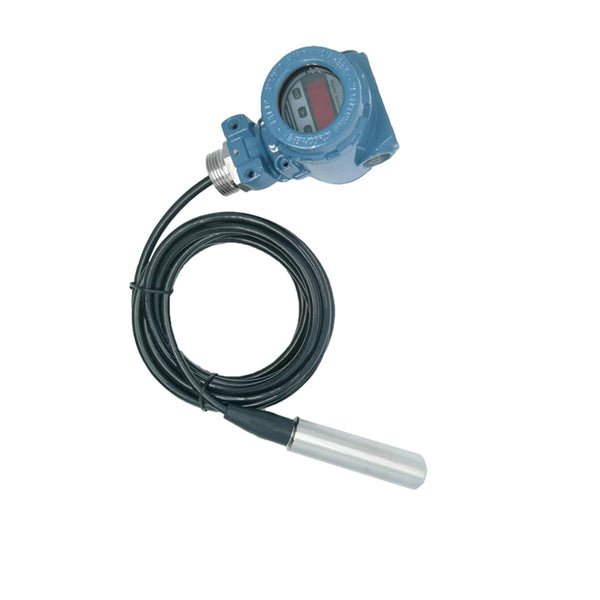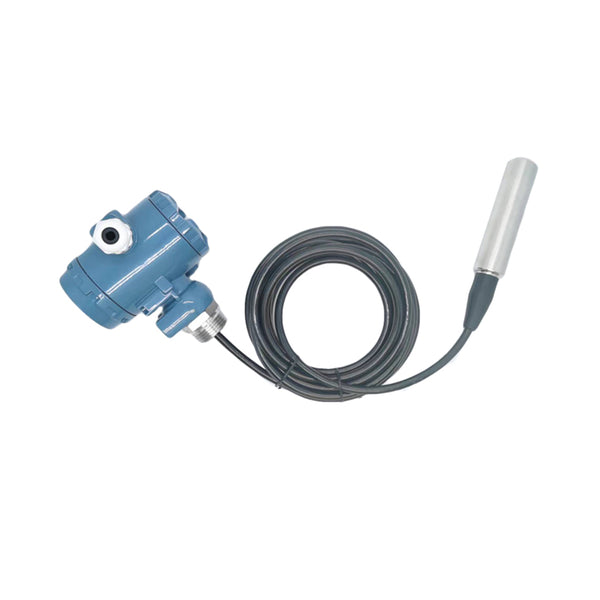Level transmitters are clever devices used in industries to measure liquid or solid levels in tanks and containers. In this article, we'll simplify the workings of level transmitters without complex jargon. These instruments are vital for ensuring efficient processes. Whether you're in manufacturing, chemical processing, or wastewater treatment, understanding how they work is key. So, let's embark on a friendly journey to unravel the inner workings of level transmitters and make sense of their role in modern industries.
What are level transmitters?
Level transmitters are essential tools used to determine the level of a substance within a container or system. They can measure levels of liquids, powders, or granules. These devices send a signal, often to a control system, that gets translated into a level reading. There are various types, including ultrasonic, capacitive, and radar transmitters. Each type uses a unique method to detect substance levels. Industries, especially those dealing with storage tanks or silos, rely on these transmitters for efficient operation and safety. Their accuracy and reliability make them indispensable in many applications.

How does a level transmitter work?
Level transmitters are essential devices used in various industries to measure the level of liquids or solids in tanks, containers, and other vessels. Understanding how a level transmitter works is crucial for anyone involved in process control, automation, or engineering. Let's see how it works.
Sensor Selection
Level transmitters come in different types, including ultrasonic, radar, capacitance, and hydrostatic. The choice of sensor depends on the specific application, such as the type of material being measured, the vessel's size, and environmental conditions.
Sensor Placement
The level transmitter's sensor is typically installed at the top of the vessel or tank, ensuring that it has a clear line of sight to the liquid or solid surface. Proper placement is essential for accurate measurements.
Measurement Principle
Level transmitters operate on various measurement principles. For instance, ultrasonic transmitters use sound waves, while radar transmitters use radio waves to determine the distance between the sensor and the liquid or solid surface.
Signal Transmission
The sensor sends out a signal, such as an ultrasonic or radar pulse, towards the liquid or solid. This signal travels at a known speed, and the transmitter measures the time it takes for the signal to bounce back.
Reflection Calculation
Once the signal reflects off the surface of the liquid or solid, the level transmitter calculates the distance by using the known speed of the signal and the time it took for the reflection to return.
Level Calculation
Using the distance measurement, the level transmitter calculates the level of the material in the vessel. This level is often displayed in various units, such as inches, feet, or meters, depending on the user's preference.
Output Signal
The level transmitter generates an output signal that can be in the form of an analog voltage, current, or digital communication protocol, such as 4-20mA, HART, or Modbus. This signal is used for monitoring and control purposes.
Calibration
Calibration is a critical step in ensuring the accuracy of a level transmitter. During calibration, the transmitter is adjusted to provide precise level measurements based on the specific characteristics of the material being measured.
Compensation for Environmental Factors
Level transmitters often include compensation features to account for factors like temperature, pressure, and density variations, which can affect the accuracy of level measurements.
Display and Data Logging
Many level transmitters have built-in displays that show real-time level readings. Some can also log data, allowing users to track level changes over time for analysis and troubleshooting.
Communication with Control Systems
Level transmitters are typically integrated into a larger control system. They communicate the level information to the control system, allowing operators to monitor and control processes remotely.
Power Source
Level transmitters require a power source to operate. This can be provided through a variety of means, including batteries, external power supplies, or even energy harvesting techniques in some cases.
Maintenance
Regular maintenance is crucial to ensure the long-term reliability of level transmitters. This includes cleaning the sensor, verifying calibration, and checking for any signs of wear or damage.
Safety Considerations
When working with level transmitters in hazardous environments, it's essential to follow safety protocols, such as explosion-proof enclosures and proper grounding, to prevent accidents.
Applications
Level transmitters find applications in a wide range of industries, including chemical processing, water treatment, food and beverage production, pharmaceuticals, and oil and gas.
Advantages of Different Types
Different types of level transmitters offer unique advantages. For example, radar transmitters are suitable for measuring levels of corrosive liquids, while ultrasonic transmitters excel in applications involving non-contact measurement.
Challenges and Limitations
While level transmitters are versatile and reliable, they do have limitations. For instance, some sensors may struggle with highly foaming or turbulent liquids, and others may be affected by dusty or vaporous environments.
Cost Considerations
The cost of level transmitters varies based on factors like sensor type, accuracy requirements, and additional features. It's essential to consider both the upfront cost and long-term operational expenses.
Future Developments
Advancements in sensor technology and signal processing continue to improve the accuracy and reliability of level transmitters. Future developments may lead to even more efficient and precise measurement solutions.
Wrapping Up
Level transmitters play a crucial role in process control and automation, providing accurate and real-time information about the levels of liquids and solids in various industrial applications. Understanding their operation, sensor selection, calibration, and maintenance is essential for anyone working with these devices. By following safety guidelines and considering the specific needs of your application, you can make the most of level transmitters to optimize processes and ensure efficient production.

FAQs
What is a level transmitter, and what does it do?
A level transmitter is a device that measures the level of liquids or solids in tanks or vessels. It sends level data to control systems for monitoring and control.
How do I choose the right level transmitter for my application?
Consider factors like material type, tank size, accuracy requirements, and environmental conditions. Consult with experts if unsure.
How often should I calibrate my level transmitter?
Regular calibration is vital for accuracy. The frequency depends on the application and manufacturer's recommendations, typically annually or as needed.
Can I use a level transmitter in hazardous environments?
Yes, you can. Look for models with explosion-proof enclosures and suitable certifications to ensure safety in hazardous locations.
What are common maintenance tips for level transmitters?
Clean the sensor regularly, verify calibration, check for damage, and follow the manufacturer's maintenance guidelines to ensure reliable performance.



Leave a comment